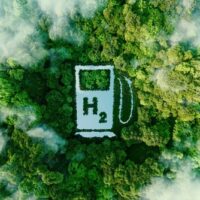Belgium, (Brussels Morning Newspaper) Denmark has opened the Greensand underground storage for imported CO2 that is to store as much as 8 million tonnes annually by 2030.
As part of the project headed by German oil and gas company Wintereshall and British chemicals company Ineos, CO2 will be compressed into liquid state and pumped into a depleted oil field. Danish authorities approved the start of the pilot phase in December last year.
Unlike the other 30 or so CO2 storage projects under development or operational in the EU, Greensand will be the first to store imported carbon dioxide.
CO2 will be captured at the source, compressed in Belgium, shipped to Denmark and stored at Greensand as part of efforts to fight against global warming.
At Greensand, liquefied CO2 will be pumped into a depleted oil field approximately 1.8 kilometres under the seabed. After the pilot phase is completed, the project is to expand to the neighbouring Siri field.
Lars Aagaard, Danish Minister for Climate, Energy and Utilities, pointed out that the project will help the country to reach carbon neutrality by 2045.
“It will help us reach our climate goals and since our subsoil contains a storage potential far larger than our own emissions, we are able to store carbon from other countries as well,” he noted.
Suitable region
The North Sea is suitable for similar projects as decades of oil and gas production in the region created potential storage sites and developed a network of pipelines.
French energy company TotalEnergies is considering a similar CO2 storage project near Greensand, noting that it could store 5 million tonnes annually by 2030.
Norway has already launched underground storage facilities and is planning to start importing CO2 to store in the coming years. The country has the largest storage potential in Europe thanks to decades of oil and gas exploitation.
The EU Environment Agency (EEA) noted that, according to estimates, bloc members emitted roughly 3.7 billion tonnes of CO2 in 2020, when economic activity was lower due to lockdowns, stressing that quantities to be stored are a small fraction of total emissions.
According to Australian think tank IEEFA, CO2 capture and storage emits roughly 21% of the gas captured. IEEFA stressed that potential leaks of pressurised CO2 could have severe consequences.



